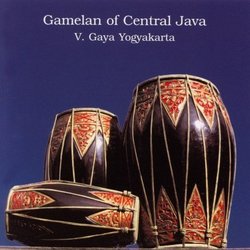| All Artists: Gamelan of Central Java Title: Gaya Yogyakarta 5 Members Wishing: 0 Total Copies: 0 Label: Dunya Original Release Date: 1/1/2006 Re-Release Date: 2/7/2006 Genres: International Music, Pop Style: Number of Discs: 1 SwapaCD Credits: 1 Other Editions: Gamelan of Central Java, Vol. 5: Gaya Yogyakarta UPC: 8021750807529 |
Search - Gamelan of Central Java :: Gaya Yogyakarta 5
 | Gamelan of Central Java Gaya Yogyakarta 5 Genres: International Music, Pop
|
Larger Image |
CD Details |
CD Reviews40 miles down the road D. Quinn | northern britain | 08/19/2008 (4 out of 5 stars) "Volume 5 of John Noise Manis's series is entirely comprised of a day's recording made in Yogyakarta, which, whilst only 40 miles or so away from the usual recording location of Surakarta, exhibits quite a different style. Indeed, even just the facts that we have different players on different instruments here is more than enough to ensure that the sound will be rather different in character, without even taking into account the independent gamelan heritage of Yogyakarta itself.
Recorded at RRI (Radio Republik Indonesia), the release is effectively a necessarily abridged version of a two-hour radio broadcast, even beginning with the signature gamelan music of RRI Yogya and ending in a piece containing comedic dialogue and a farewell. There are five pieces, including two lengthy and delightful gendhing bonang, a gamelan form named after the bonang (the collection of small Javanese `kettles') which gives these pieces their character, and a form of ensemble which apparently never utilises the stringed instrument known as the rebab. These two are especially enjoyable - beautiful displays of the organic rippling quality which a lot of Western musicians would probably think of as subtle, melodic syncopation. The booklet includes a printed conversation between the series curator John Noise Manis and Bapak Hardja Susilo, one of Yogya's leading gamelan players. It's an illuminating read, touching upon gamelan's place in classical music of the world, how and if it might be made more accessible to Westerners, the differences and similarities between the styles of Solo and Yogya, and most fascinatingly of all the notion that gamelan music has a long history, but "properly performed, (it) always changes...It is infact a contemporary music, as it takes shape at that point in time". This balance between tradition and respectful experimentation is a very interesting subject of study. Another enjoyable release - just a pity we couldn't have the entire two-hour broadcast. " |

 Track Listings (5) - Disc #1
Track Listings (5) - Disc #1